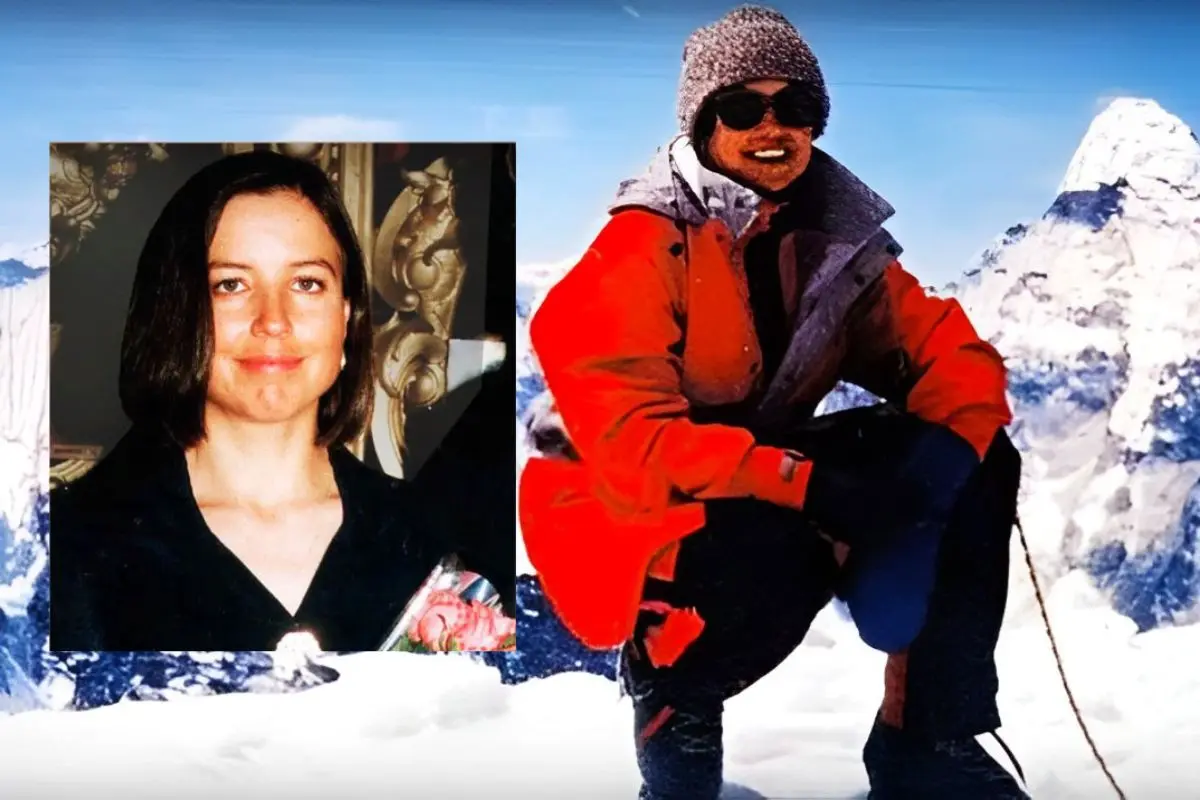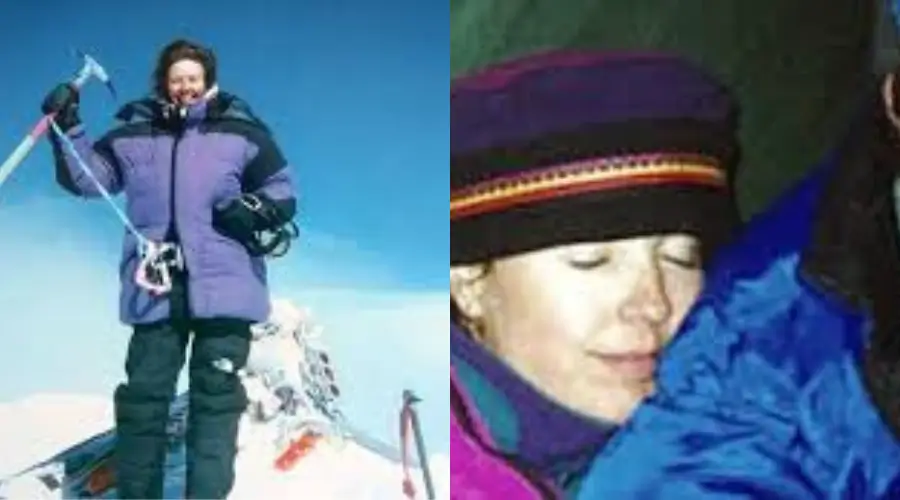
Sleeping Beauty: A Journey to the Summit of Everest
Among the numerous anecdotes about human passings on sleeping beauty mount Everest, the story of "Green Boots" sticks out. The man accepted to be behind the moniker, Tsewang Paljor, left on his last process in the spring of 1996, not realizing that his destiny would turn into a foundation of Everest legend.
Before he became known as Green Boots, Tsewang Paljor was a cultivated climber intensely for the mountains that characterized his local Ladakh. He was brought into the world on April 10, 1968 in a little town in India called Sakti. The rough territory of Asia gave the ideal setting to his initial introductions to mountaineering.
His climbing resume incorporated a few high pinnacles, exhibiting his abilities and developing his purpose to handle the world's most noteworthy culmination. Getting over was in excess of a side interest for Paljor; it was a calling that drove him to the Indo-Tibetan Boundary Police (ITBP), a task that wedded his calling with his enthusiasm for the mountains.
What You Know Sleeping Beauty Mount Everest?

High Stakes: Everest Without Oxygen
To know sleeping beauty mount Everest is perhaps of the most lethal mountain on the planet to ascend. Its casualty rate is roughly 6.5 passings per 100 effective highest points.
Climbing sleeping beauty mount Everest without the utilization of supplemental oxygen takes an enormously troublesome and risky test and increases current standards much higher. Until this point, more than 10,000 individuals have effectively climbed Everest. Nonetheless, somewhere around 200 have done it without oxygen. It's a selective club of climbers.
Read Also: What Time Will The Northern Lights be Visible Tonight?
The overwhelming "Passing Zone," which lies over 8,000 meters (26,247 feet), presents a huge number of issues for the human body. The oxygen levels are very low, approximately 33% of that adrift level. This climate prompted hypoxia, pushing the human body as far as possible.
The gamble of experiencing extreme high-height ailments, including intense mountain disorder (AMS), high-elevation cerebral edema (HACE), and high-elevation pneumonic edema (HAPE), is extraordinarily expanded without supplemental oxygen. These circumstances can be lethal. Moreover, the absence of oxygen powers climbers to continue at a more slow speed, fundamentally raising the gamble of frostbite, openness, and weariness.
Endeavoring Everest without supplemental oxygen requests remarkable actual wellness, an unprecedented acclimatization capacity, and mental grit. The specialized hardships of the ascension are amplified without the guide of oxygen.
Understanding the Sleeping Beauty Mount Everest
Francys and Sergei arranged their joint undertaking to Everest in 1998. They had an elevated objective; both would highest point without the guide of supplemental oxygen. On May 17, they started their climb from the North Col, arriving at critical elevations earnestly.
The pair made two endeavors on the culmination however were ruined by headlamp disappointment and nasty weather conditions. Notwithstanding these difficulties, the couple persisted and effectively arrived at the culmination on May 22. In this blog, you can find the latest and best information about the climing sleeping beauty mount Everest 2025.

Sadly, the drop demonstrated deadly for Francys. She became isolated from Sergei in the obscurity and the outrageous circumstances. For a really long time, she battled for endurance.
Her circumstance developing progressively hazardous as the mountain drained her solidarity. A Uzbek group experienced Francys and attempted to help her. In any case, as she couldn't continue all alone, they at last surrendered the work and went on down without her.
Her most recent experience was with climbers Ian Woodall and Cathy O'Dowd. "Try not to leave me," she shared with O'Dowd. O'Dowd related that Francy's skin was smooth white and thoroughly smooth. The extreme frostbite made her seem to be a porcelain doll. "For what reason are you doing this to me?" she inquired. They also had to leave her.
Francys passed on May 24, 1998, at 40 years old, in a similar place where she was most recently seen. The resulting disclosure of her body close to the upper east edge gave to her the moniker "Dozing Magnificence." She seemed serene, lying in the snow as though in sleep as opposed to the hold of death.
With respect to Sergei, he rose the mountain conveying medication and oxygen in a gallant endeavor to see as her. As the Uzbek climbers slid to camp, they saw Sergei returning up. He was at absolutely no point ever seen alive in the future. His body was found in 1999 by climbers on an undertaking. The specific conditions of his demise remain covered in the secret.
Is Dozing Excellence Still on Everest?
Yes. For almost 10 years, Francys' body lay presented to the components close to the mountain's hazardous upper east edge. She was moved concealed, away from the climbing course, in 2007. Ian Woodall, who had experienced Francys on Everest right away before she passed, attempted the mission out of sympathy and regard.
Read Also: University of Arizona College Tuscon Medicine Mission Statement
Today, the specific area of Francys' last resting place stays undisclosed, a choice made from regard for herself as well as her loved ones. Woodall and his group enclosed the body by an American banner, then.

At that point, moved her to a spot where she would as of now not be a waypoint for climbers. This gave her a similarity to an internment on the pinnacle that had guaranteed her life. In doing as such, Woodall and his group gave an honorable finish to the disastrous story of Everest's Resting Magnificence.
FAQ's- Sleeping Beauty Mount Everest
Is Sleeping Beauty still on Mount Everest?
Yes, the corpse of Sleeping Beauty is there on Everest. Following her death, she was sighted on the paths to the Everest ascent. Ian that Woodall and Conrad Anker discovered her body in 2007 and transferred it to a nearby place. They moved it out from the climber's sight.
What is the story of the Sleeping Beauty on Mount Everest?
This lack of oxygen in the high-altitude location decreased her cognitive capacities dramatically. Hence, Francys perished on her trip down to the basic station of Mount Everest. Francys Arsentiev, a Russian mountain climber who died away on Mount Everest in 1998, was also renowned as the Mount Everest Sleeping Beauty.
Do Everest climbers wear diapers?
Others climbers build tent toilets whilst some of others pee and poop in their tents. Workers carry sanitary bags for bodily material and bottles for pee which they ought to bring back. Also, some of the jumpers wear diapers.
Can a helicopter go to the peak of Mount Everest?
Camp II is the highest location on Everest now, where the helicopters can make safe landings. So, to answer your question a helicopter fly to the peak of Mount Everest, for the commercial, its totally impossible right now.
What happened to the sleeping beauty of Everest?
Francys Arsentiev, aka the Sleeping Beauty of Mount Everest, perished of Hypothermia is and Cerebral Edema. This condition is an ailment developed owing to extended exposure to intense cold. Since Francys and her husband had been at 8600 meters of Everest for roughly 3 days, the severe temperature got to her, ending in her death.








